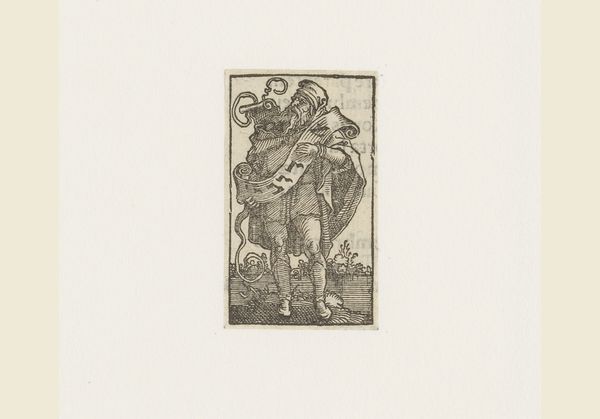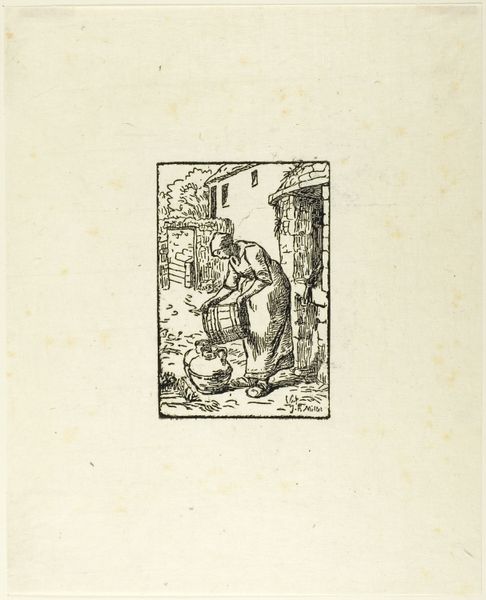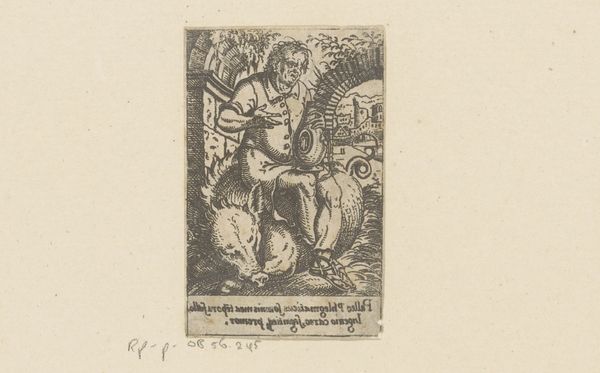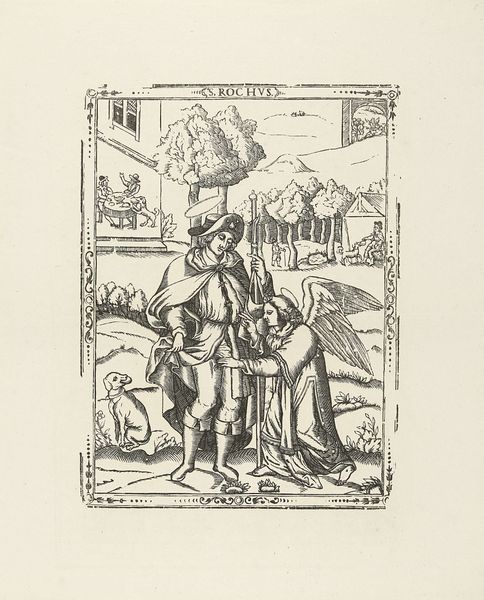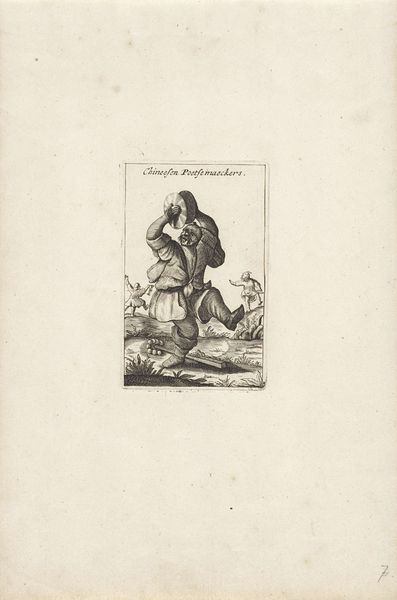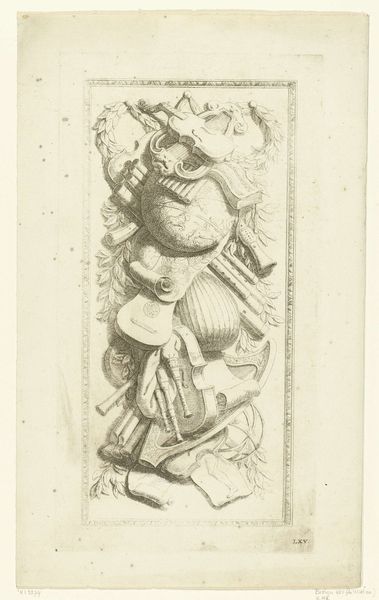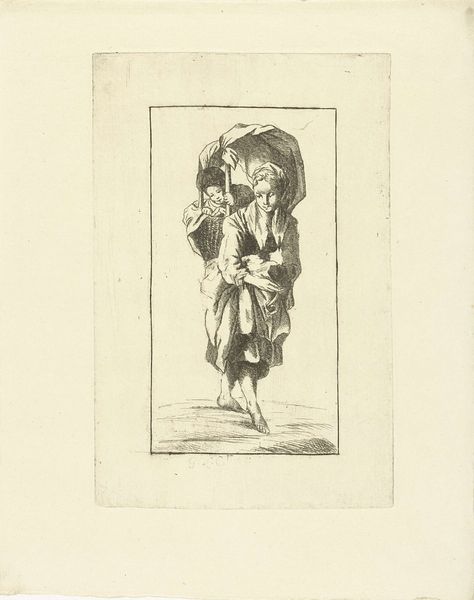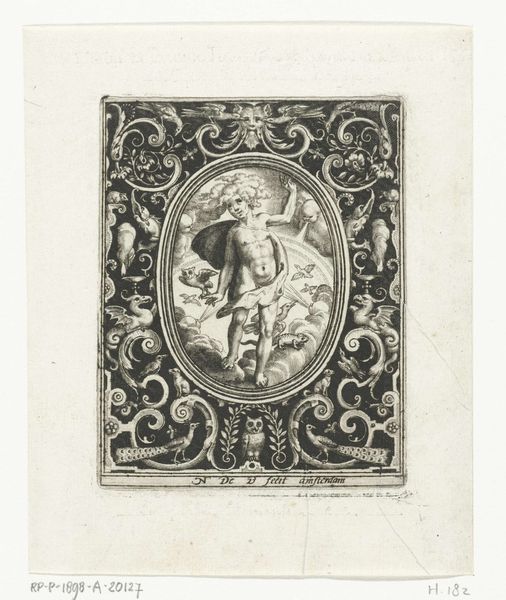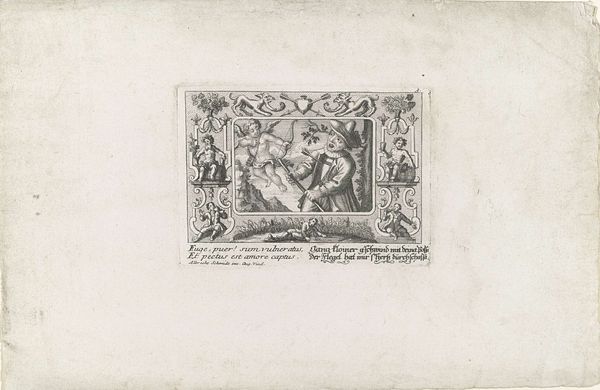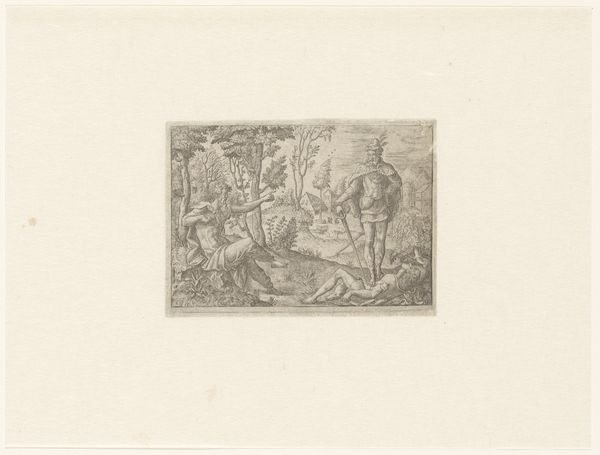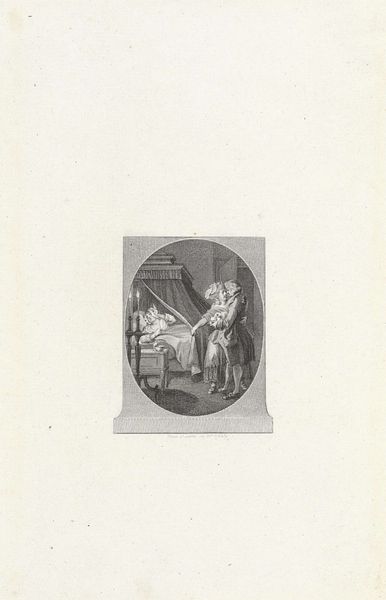
print, etching
#
portrait
#
baroque
# print
#
etching
#
genre-painting
Dimensions: height 91 mm, width 56 mm
Copyright: Rijks Museum: Open Domain
Curator: Johannes Ploos's etching from 1704, titled "Boerin," offers us a window into genre painting through the lens of Baroque printmaking. I see it almost as a complex statement about the role and perception of women. Editor: My first impression is one of sparseness and simplicity. The limited material—the starkness of the etching itself— speaks to the realities of production and the labor embedded in even the humblest image. Curator: Exactly. We see that represented in the woman, front and center; a hardworking peasant woman carrying her basket of goods. Around her, other scenes depict elements of rural life and labor. Editor: The way Ploos used etching—a relatively accessible printing process— also mirrors the dissemination of labor practices of his time, documenting everyday life. Is "Boerin" just a straightforward portrayal of pastoral life? Or is it subtly commenting on economic structures? Curator: I think it is making layered commentary on the world it represents. It could be interpreted as highlighting class distinctions and societal roles and norms assigned by class and also by gender. Think about the positioning of this woman against these multiple backgrounds, it evokes questions of female agency in a rural setting and perhaps the complex social structure of 18th-century rural life. Editor: Agreed, though I'm curious if the technique limits the kind of narrative nuance the work achieves, right? How much is artistic vision, and how much is dictated by the constraints of the materials and the printing process? Does the medium obscure certain dimensions of this woman's identity, or bring certain aspects more into focus? Curator: I think Ploos uses those limitations as tools. By reducing her to this collection of lines and symbols, he asks us to consider the bigger themes, not just her individuality. What do these images convey about the value placed on physical labor? It’s an insightful historical work—it sparks so many avenues to explore! Editor: Precisely. Considering how the image was made, disseminated, and consumed adds crucial depth to any reading, particularly as it relates to the material conditions represented within the image. It underscores the importance of craft traditions within an historical and socioeconomic context.
Comments
No comments
Be the first to comment and join the conversation on the ultimate creative platform.
